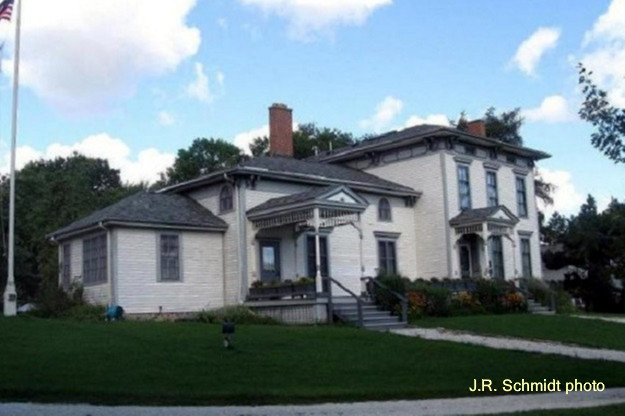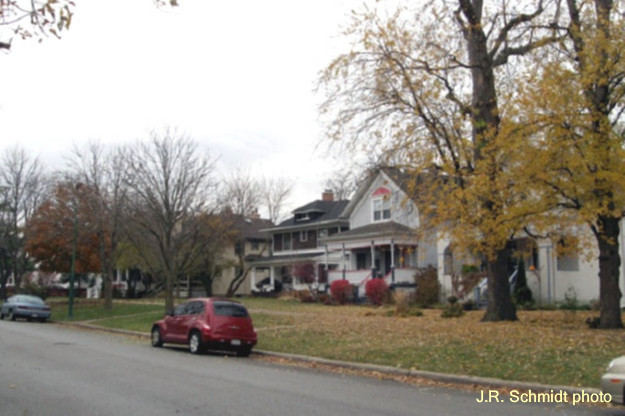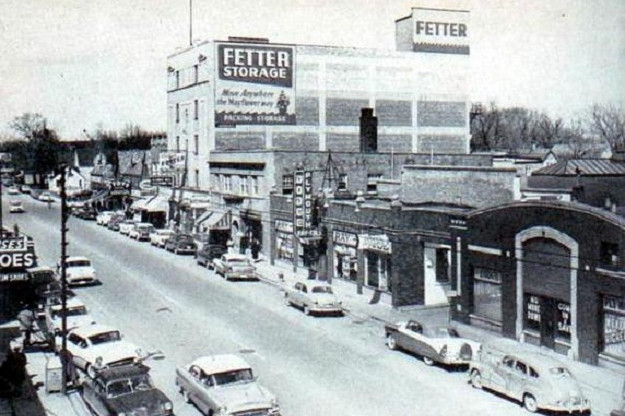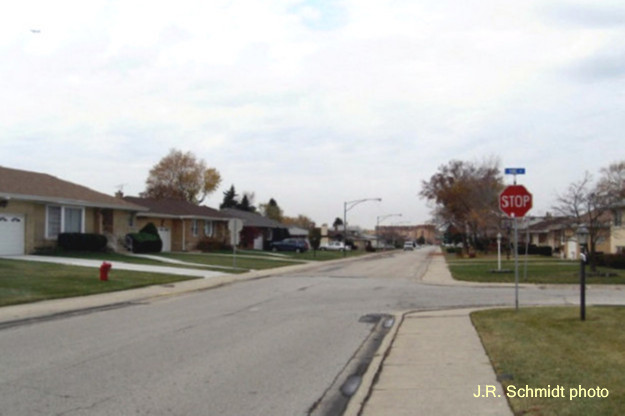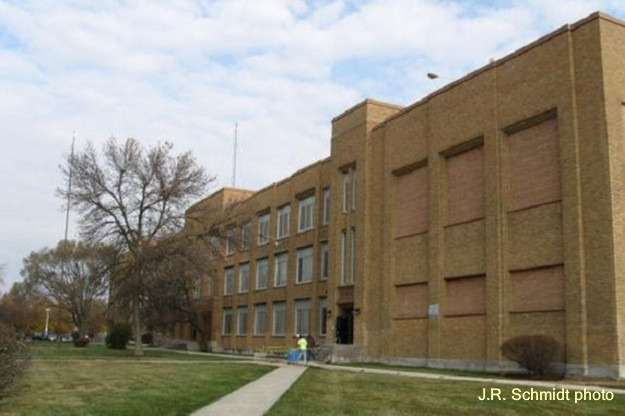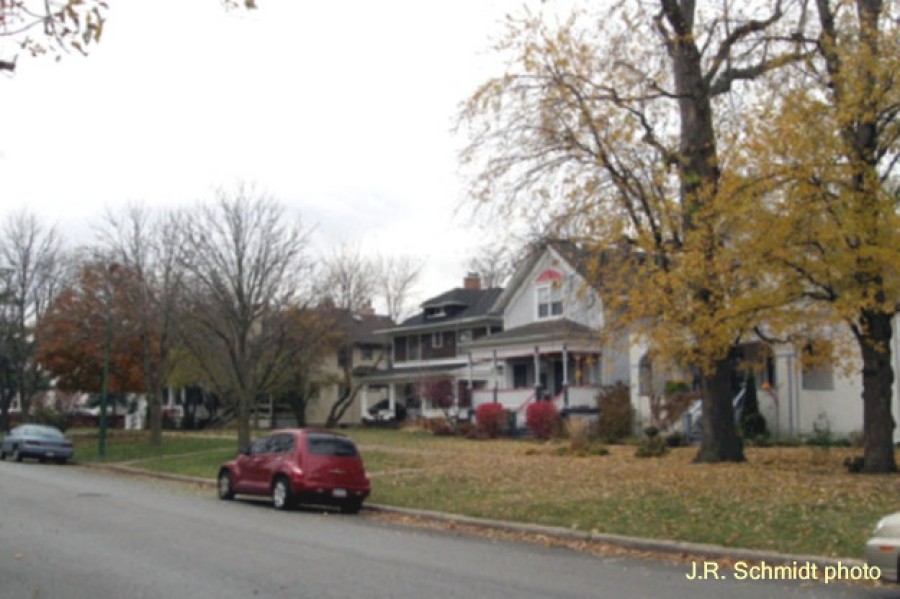Norwood Park, Community Area 10, is one of Chicago’s railroad communities. The original settlement was planned around the Chicago & North Western commuter line. But that’s not the beginning of our story.
In 1833 Mark Noble filed claim to 150 acres of land in the area. He built a frame house on a glacial ridge and lived the life of a gentleman farmer. Today his home, at 5634 North Newark Avenue, is the oldest building in Chicago.
Other farmers followed Noble. Then in 1868, a group of Chicago investors purchased 860 acres near the railroad for real estate development. Taking their name from a popular novel, they called their community Norwood Park. A town hall and shops were built across from the C&NW station.
The new town featured wide lots with expansive front lawns. Instead of following the rigid Chicago grid, the streets were pleasantly curved–one of them even formed a circle. Three small parks were laid out and hundreds of shade trees planted.
To promote development, frequent ads were run in the Chicago newspapers. It’s worth quoting one of them–
“Only 11 miles from the Court House on the Chicago & North Western, 30 minutes ride. Eighty feet above the lake on beautiful, rolling ground, perfect drainage. No malaria, no saloons, no nuisances of any kind. Good society, churches, graded schools, stores.”
New settlers arrived. They built large Victorian homes on the high ground near the ridge. As Norwood Park grew, the residents saw the need for city services. In 1893 they voted to become part of Chicago. Today the historic heart of the original town is called Old Norwood.
The eastern part of the community was not developed until after annexation. Though closer to the city, the land here was marsh. New sewers solved that problem, and bungalows began going up.
By 1930 Norwood Park was home to 14,000 people. A local shopping district had evolved near Northwest Highway and Raven, and a string of small factories lined the railroad. Then came the Depression and World War II. Building stopped, with large areas to the south and west still prairie.
Development resumed after the war ended. Now the families of the Baby Boom were buying cars and looking for ranch homes. The outer portions of Norwood Park–Big Oaks, Union Ridge, Oriole Park–were filling up. The population reached 27,000 in 1950, and 41,000 ten years later.
Still, it took a while to tie Norwood Park to the city. The railroad was fast, but expensive. Most residents who wanted to get downtown faced a long, slow journey, driving on surface streets or riding the Milwaukee Avenue streetcar.
The Northwest (Kennedy) Expressway was completed in 1960. The community now had convenient auto access to other areas, though traffic grows heavier each year. The O’Hare branch of the CTA Blue Line has been an alternative since 1983.
Drawing a map of Community Area 10 should not be attempted by amateurs. That’s because the boundaries are so complicated. Politics is the reason, of course.
During the 1950s Chicago wanted to establish a land connection to the new O’Hare Airport, and began claiming large swaths of territory. The boundaries of Community Area 10 were stretched west to Cumberland Avenue. But in the middle of all this Chicago land, there are several blocks that refused to join the city, and remain unincorporated. They are known as Norwood Park Township.
Today the Chicago community of Norwood Park is a stable, middle-class area. The population of 37,000 is largely White European American. About 12% identify as Hispanic. Local landmarks include the Noble home, Superdawg Drive-in, and Taft High School, inspiration for the musical Grease.


